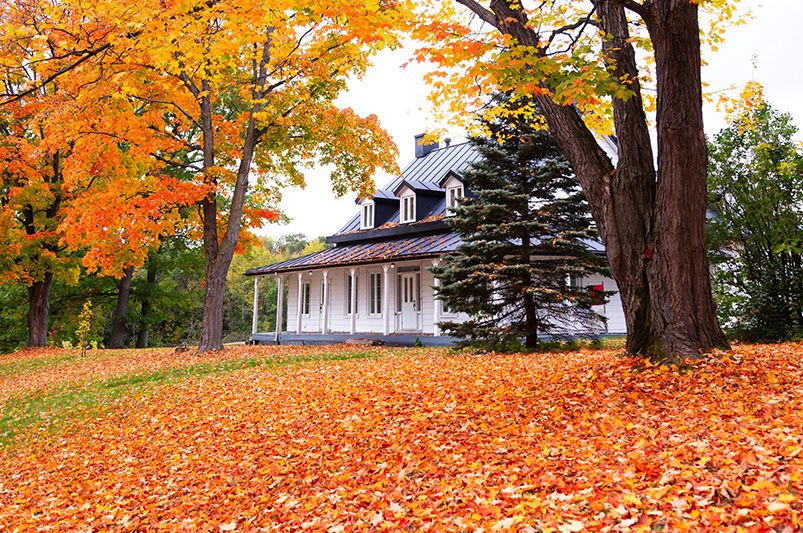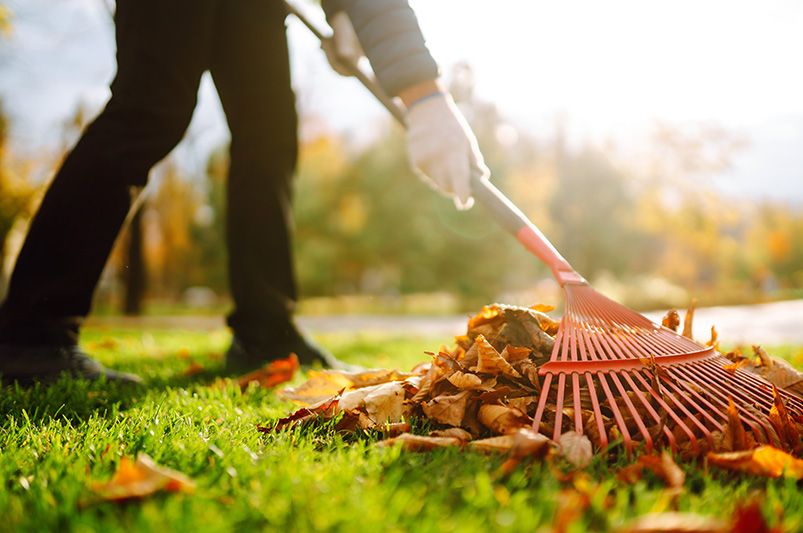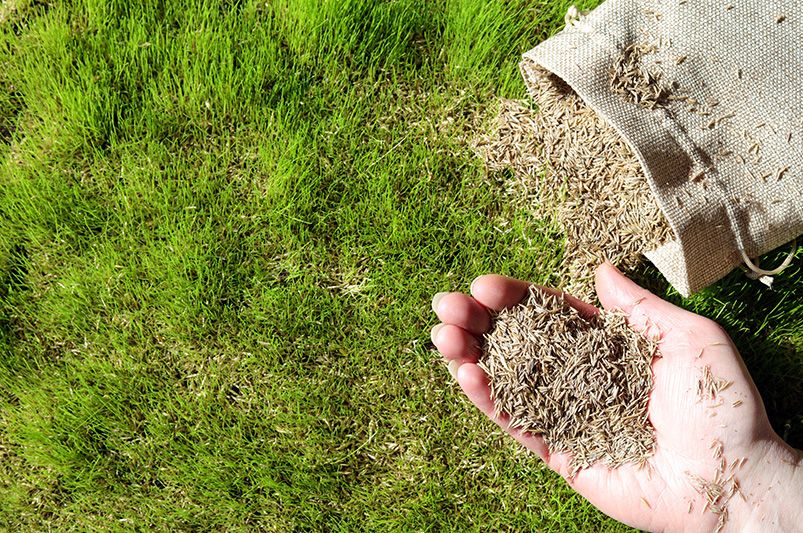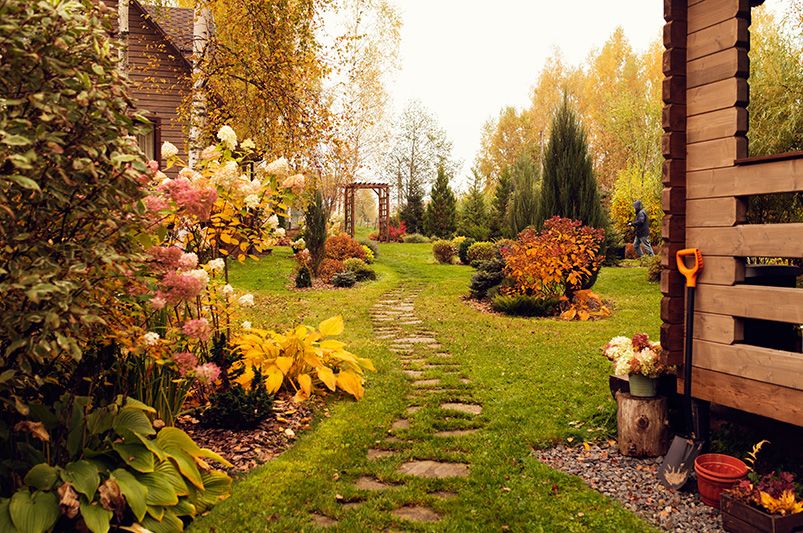
Get Your Yard Ready for Fall: Expert Lawn Care Tips
Published: 03/09/2024 | Updated: 02/09/2024
Key Highlights
- Prepare your lawn for winter with these expert tips.
- Learn the best practices for leaf management, mowing, and watering.
- Discover the benefits of aeration and overseeding in the fall.
- Get answers to frequently asked questions about fall lawn care.
- Ensure a healthy, lush lawn next spring with proper autumn maintenance.
Introduction
As summer ends and the days get shorter, it’s time to switch from enjoying summer to taking care of your lawn for early fall. It may seem strange to think about lawn care as it gets cooler, but fall is a great time to prepare for a healthy and lively lawn next year. This guide will help you learn what you need to know to make your lawn standout in the neighborhood come spring.


The Essentials of Fall Lawn Care
Fall lawn care is not just about looking good. It is an investment in the health of your lawn for the long term. In autumn, grass is getting ready for the cold winter months. The cool weather and enough moisture help roots to grow and take in nutrients. This leads to a stronger and more resilient lawn.
Why Autumn Care is Crucial for a Healthy Lawn
The change from summer to fall is a great time to refresh your lawn after the hot summer days. By following a fall lawn care plan, you can help your grass bounce back from summer strain and get ready for winter. During this time, the roots grow stronger, which helps your lawn become thicker and healthier. This makes it better at fighting off diseases, pests, and tough winter weather. In the end, this will help you have a lush lawn when spring arrives.
Transitioning Your Lawn Care Routine for Cooler Weather
As the days get shorter and the air gets cooler, it is time to change how you care for your lawn. In summer, you mainly help your grass deal with heat and keep it watered. In the fall, you need to focus on what cool weather grasses require. This means changing when and how you mow, water, and fertilize your lawn. These changes will help your grass prepare for winter dormancy and will support its revival in spring.
Leaf Management Strategies
Autumn leaves look nice, but they can harm your lawn if you don’t take care of them. When leaves pile up, they block sunlight and air from getting to the grass blades. You need to deal with fallen leaves quickly to stop lack of air, illness, and a weak lawn. You can either rake the leaves like most people do or use a leaf blower for a faster way. Having a good plan for managing leaves is important for keeping your lawn healthy and full of life.
Effective Raking Methods for a Clean Yard
Raking is a reliable way to clear away fallen leaves and keep your yard clean. It's important to be consistent. Try to rake your lawn at least once a week when leaves are falling the most. This helps prevent matting and allows air to reach the grass. Use a wide, flexible rake. This type will help you gather leaves while being easy on your back. Rake in the direction that the grass grows to protect the blades. If your lawn is big, break it into smaller sections. You can also ask family members or a lawn care service for help to make the job easier.
Leveraging Leaf Blowers for Efficiency
For homeowners who want a quicker and easier way to deal with leaves, leaf blowers are a great choice, especially for big yards. Leaf blowers can quickly gather leaves into piles that are easy to throw away or use for compost. When using a leaf blower, start from your house and move outward. This will help push leaves away from buildings and toward where you want to gather them. Make sure to check the direction of the wind to blow leaves where you want them, and try not to blow any debris onto your neighbor's yard. Some leaf blower models even have mulching features. These can make cleaning your yard easier and also give you helpful organic material for your garden beds.

Optimal Mowing Techniques for Fall
As summer changes to fall, you may want to put the lawn mower away. But keeping a regular mowing schedule into autumn is important for a healthy lawn. Cooler weather doesn’t mean the grass stops growing. Your lawn still grows, though slower, needing care to stay healthy in the fall. Using the right mowing methods is key to helping your lawn prepare for winter dormancy in good shape.
Determining the Best Grass Height Before Winter
Keeping your grass at the right height is important as winter comes. This helps protect your lawn from the cold. In the fall, slowly lower your mower blades. Aim for a grass height of about 2.5 to 3 inches. Don’t cut the grass too short before winter. Longer grass blades help roots grow deeper. This makes your lawn stronger against winter storms and cold weather. Cutting the grass too short can harm it. A weak lawn is more likely to get sick, be hurt in winter, and have weeds.
Adjusting Mowing Frequency to Promote Growth
Keeping a regular mowing schedule during the fall is important. You should change how often you mow based on how fast the grass grows. In the fall, the weather gets cooler and there’s less sunlight, which slows down grass growth. As a general tip, try to mow your lawn once a week or when needed. This will help keep the grass at a height of 2.5 to 3 inches. Mowing regularly makes your lawn look neat and helps to mulch fallen leaves and plants. This returns important nutrients to the soil and helps your lawn stay healthy.
Watering Your Lawn in Autumn
As temperatures go down and rain changes, people often ignore watering their lawn in the fall. But it is very important to keep the soil moist during this time for a healthy lawn ready for winter. Deep roots are key for a lawn to survive the colder months and grow well in the spring. To help the roots grow, a steady supply of water is very important.
Modifying Watering Schedules as Temperatures Drop
As the weather turns cooler, you may see more rain in some areas. This means you need to change how you water your lawn to avoid giving it too much water. While it's still important to water deeply but less often, your fall watering practices should be different than summer. Water less frequently, but make sure to give it a deep soak when you do. Try to give your lawn about an inch of water each week, including any rainfall. Use a rain gauge to track how much it rains. Adjust your watering schedule so your lawn gets enough moisture without becoming soggy.
Recognizing the Signs of Proper Hydration
Proper watering is very important for a healthy lawn. But how can you tell if your lawn is getting enough moisture? The look of your lawn can give you good clues. A well-watered lawn is usually a bright green color. This shows that it is growing well and the roots are developing properly.
On the other hand, too much water can cause problems. You might see water puddles on the surface, a lot of thatch, and the ground may feel spongy when you walk on it. If your lawn is not getting enough water, the grass blades may wilt and turn a dull grayish-green. You will also see footprints that last for a long time. Checking these signs can help you know how well you are watering your lawn.

The Importance of Aeration and Overseeding
The change to fall is a great time to fix two common lawn problems: compaction and thinning. After a busy summer, these issues can affect your lawn. Aeration and overseeding are both good lawn care practices. Doing them in the fall can really help your lawn become healthier and denser. This also makes your lawn look better. It prepares everything for a green and lively lawn next spring.
How Aeration Benefits Your Lawn in the Fall
Aeration, the process of perforating the soil with small holes, is especially beneficial in the fall. By creating channels in the soil, aeration allows air, water, and nutrients to penetrate deeply, reaching the root zone more effectively. This is particularly crucial in fall, as it helps repair summer damage and promotes strong root development before winter.
|
Benefit |
Description |
|
Improved drainage |
Alleviates soil compaction, allowing water to drain more efficiently and reducing the risk of waterlogging. |
|
Enhanced oxygen flow |
Increases oxygen levels in the soil, stimulating root respiration and promoting healthy growth. |
|
Nutrient absorption |
Creates pathways for essential nutrients to reach the roots, maximizing fertilizer effectiveness. |
|
Reduced soil compaction |
Relieves compaction caused by foot traffic and heavy equipment, improving overall soil structure. |
Overseeding Tips for a Fuller Lawn
Overseeding is the act of spreading grass seed on an existing lawn. This method helps fill in bare spots, makes the lawn thicker, and brings in new grass types that are stronger. The best time to overseed is in the fall. The cooler weather and moist soil during this time help the seeds grow well.
To get started, pick a good grass seed that matches your lawn type and the local climate. First, mow the current grass low and rake the area to get rid of any debris. It's best to overseed right after aerating. The holes made from aerating help the seeds reach the soil better. Keep the area with new seeds moist until the seeds germinate. This usually happens in 7 to 21 days, based on the grass type.

Conclusion
As autumn gets closer, it's important to get your lawn ready for the changes ahead. You should manage leaves well, change your mowing techniques, adjust your watering schedule, and think about aeration and overseeding. These steps are key to keeping your lawn healthy in fall. By using these lawn care tips, you can keep your yard looking green and lively during the colder months. Remember to share these tips with your friends and family on social media so they can prepare their yards for fall too. Happy lawn caring! #FallLawnCare #ExpertTips
Frequently Asked Questions
What’s the best way to deal with fallen leaves?
The best way to handle fallen leaves uses different techniques. You can use a mulching mower to chop up the leaves and return them to the lawn as fertilizer. For bigger piles of leaves, it is better to rake or blow them into stacks. You can then compost them or throw them away.
How often should I water my lawn in the fall?
In autumn, how often you water depends on the rain and temperature. A good goal is to give about one inch of water each week, including any rainfall. Keep an eye on your lawn and cut back on watering if it has rained enough.
Can I still fertilize my lawn late in the fall?
Yes, fertilizing in late fall is good, especially with a fertilizer that has a lot of potassium. It helps the roots grow and gets your lawn ready for winter. Remember to pick a fertilizer made just for fall use.
At ShrubHub, we specialize in creating custom outdoor spaces that fit your lifestyle and preferences. If you’re considering adding a putting green to your backyard, our expert team is here to help you every step of the way, from design to installation. We offer a wide range of services, including 3D custom landscape designs that bring your vision to life and a variety of high-quality materials to ensure your putting green is built to last.
Explore our website at ShrubHub.com to learn more about how we can help you create the backyard of your dreams. Whether you're looking for professional advice, design inspiration, or a trusted team to bring your ideas to life, we're here to make it happen. Contact us today to get started on your backyard transformation!


